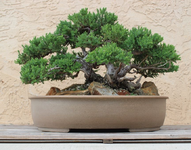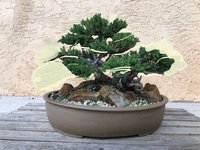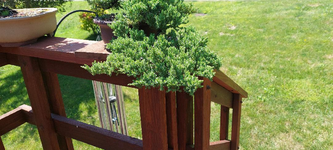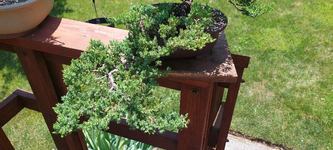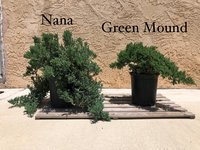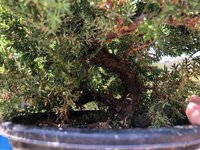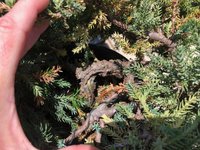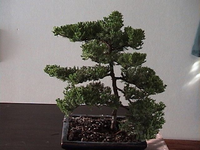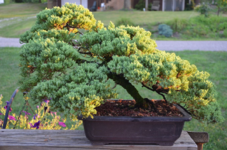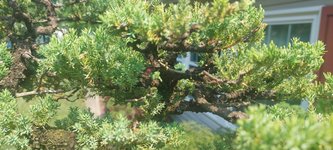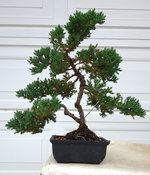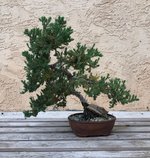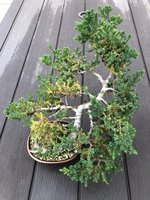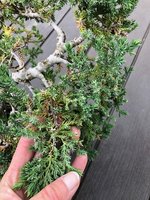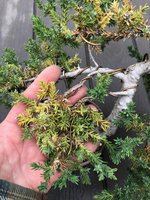Since I have a number of Nana Junipers, I need to learn how to prune them to best maintain their shape and vitality. I recently 'pinched' one of my larger Nanas, but I'm never really happy with the results of this method, since it leaves brown tips and if aggressive pinching is needed to maintain a shape, most if not all of the new growth is removed by just shortening the ends.
@Japonicus has suggested a different way to prune Nana pads which he learned from BVF, so today I trimmed two pads in this method to see how it goes. Hope I did it correctly.
The specimen:

I love this tree's twists and turns, but you really have to get in close to see the details.
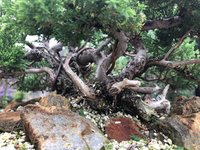
First pad. Note the brown tips from pinching the week before.

Picture taken after applying the new trimming method. Forgive the clumsy wiring. I'll probably remove the top crossing branch if the side shoots near it do well, but I didn't want to take off any more woody branches than absolutely necessary.
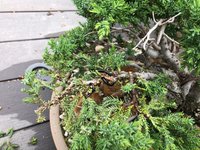
Second pad. Its branches have a very weird structure, but I like how cleaning off the top let more light down onto the trunks.
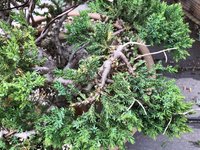
Now to see how it responds to being pruned this way.

@Japonicus has suggested a different way to prune Nana pads which he learned from BVF, so today I trimmed two pads in this method to see how it goes. Hope I did it correctly.
The specimen:

I love this tree's twists and turns, but you really have to get in close to see the details.

First pad. Note the brown tips from pinching the week before.

Picture taken after applying the new trimming method. Forgive the clumsy wiring. I'll probably remove the top crossing branch if the side shoots near it do well, but I didn't want to take off any more woody branches than absolutely necessary.

Second pad. Its branches have a very weird structure, but I like how cleaning off the top let more light down onto the trunks.

Now to see how it responds to being pruned this way.


